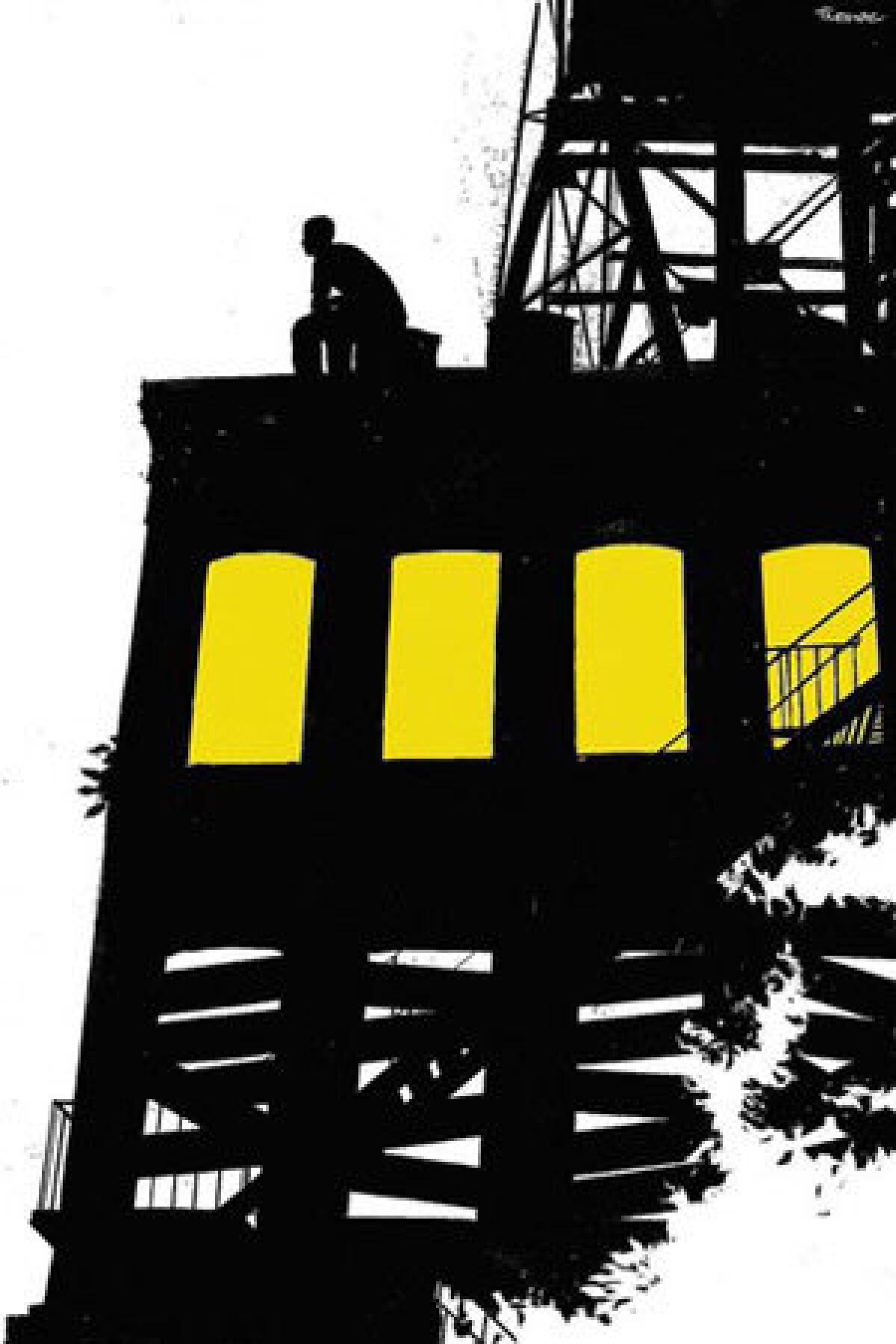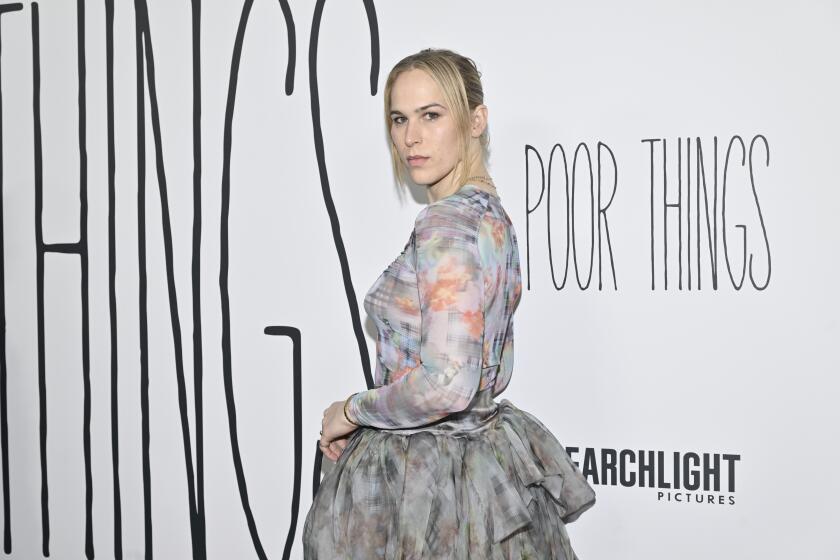Book review: ‘Sunset Park’ by Paul Auster

Sunset Park
A Novel
Paul Auster
Henry Holt: 312 pp., $25
Halfway through Paul Auster’s 16th novel, “Sunset Park,” a writer named Renzo Michaelson mentions to his publisher, Morris Heller, a concept he has for “an essay about the things that don’t happen, the lives not lived, the wars not fought, the shadow worlds that run parallel to the world we take to be the real world, the not-said and the not-done, the not-remembered. Chancy territory, perhaps, but it could be worth exploring.”
The men, in their 60s, are sitting at a deli on Manhattan’s Upper West Side, after the funeral of a friend’s 23-year-old daughter who has hanged herself. But the notion of a universe of unrealized possibilities speaks to more than just the tragic death of this young woman. Indeed, it radiates throughout the book.
At the heart of “Sunset Park” is Heller’s relationship with his own child, Miles, who disappeared at 21 after a family tragedy for which Miles feels responsible; although Morris has kept tabs on him from a distance, Miles has not been home in more than seven years. What do we make of this? What does it tell us about our tenuous links with other people, about the way that what we most take for granted — our families, our children, our unspoken faith in fortune — can unravel in an instant? These are the issues that define “Sunset Park,” a novel about the difficulty of finding redemption in a world defined by loss.
None of this is to imply that “Sunset Park” is bleak, just possessed of a wide-eyed understanding of consequence, unavoidable in a city such as New York, which remains scarred by “the missing buildings, the collapsed and burning buildings that no longer exist, the missing buildings and the missing hands.”
That echoes the ending of Auster’s 2005 novel, “The Brooklyn Follies,” another elegiac paean to the city, which opens with a man coming to Brooklyn to lose himself and closes with the towers’ fall. Both books trace a line between the personal and the collective, between individual destiny and a broader sense of flux. In “The Brooklyn Follies,” Auster used a bookstore as the fulcrum; here, he frames the story around a squatter’s house in the borough’s neighborhood of Sunset Park. It is to this squat that Miles comes when he is chased out of Florida after falling in love with an underage girl named Pilar. His arrival sets in motion the promise of a reconciliation with his parents, if not entirely with himself.
Miles is a man without professional ambition; as the novel begins, he is working on a crew gutting foreclosed homes. He likes to photograph “the innumerable cast-off things left behind by the departed families,” less as an art project than as a strategy for passing time. What truly interests him is coincidence, the random encounter that changes everything. This is at the heart of his devotion to Pilar, with whom he connects because both happen to be reading “The Great Gatsby”; it also gives him some common ground with his father, who is similarly drawn to chance.
Early in the book, he reflects on Herb Score, a pitcher for the Cleveland Indians whose promising career effectively ended in 1957, only his third season in the big leagues, after he was struck in the face by a line drive. Score, it turns out, was “a cursed man from the beginning,” as Miles reads in his New York Times obituary, quoted here: “When he was 3, he was struck by a bakery truck, which severely injured his legs. He missed a year of school with rheumatic fever, broke an ankle slipping on a wet locker-room floor and separated his left shoulder slipping on wet outfield grass in the low minor leagues.” What does it mean, Miles wonders, that we can be so blessed and so blighted? Such a question takes on a personal resonance both because of Miles’ grandfather, another promising pitcher who suffered the same kind of injury, and because of Miles’ turmoil. Miles may be a prodigal but there is little resolution in his homecoming, which only serves to highlight his (and all of our) inability to connect.
Auster makes the point explicit by invoking, throughout the novel, two works of illusion that speak to these issues: William Wyler’s 1946 movie, “The Best Years of Our Lives,” and Samuel Beckett’s play “Happy Days,” in which Miles’ mother, an actress, is appearing. With the former, he highlights a generational breakdown (“the story of three men broken by war and the difficulties they confront when they return to their families”) that echoes Miles’ estrangement; with the latter, a more personal dislocation, in which the central character, Winnie, expresses her loneliness in what is, essentially, a 90-minute monologue. For Winnie, the only solace is that her desolation has a witness; she speaks to an audience, implicit or otherwise. “Someone is looking at me still,” she murmurs. “Caring for me still. That is what I find so wonderful. Eyes on my eyes.”
In part, this says something about narrative, which only comes to life in the eye of a beholder. The danger, though, of such conceptualism is that Auster sometimes overstates his case. The novel suffers from an excess of analysis, especially the essay-like accounts of the fatwa against Salman Rushdie and PEN American Center’s efforts on behalf of human rights. Still, Auster keeps coming back to “the pull of the stories, always the stories, the thousands of stories, the millions of stories, and yet one never tires of them” — although, of course, they are never enough. This makes “Sunset Park” a novel that finishes as open-endedly as it begins. Chancy territory, as Renzo puts it, but ultimately, what other choice do we have?
More to Read
The biggest entertainment stories
Get our big stories about Hollywood, film, television, music, arts, culture and more right in your inbox as soon as they publish.
You may occasionally receive promotional content from the Los Angeles Times.







